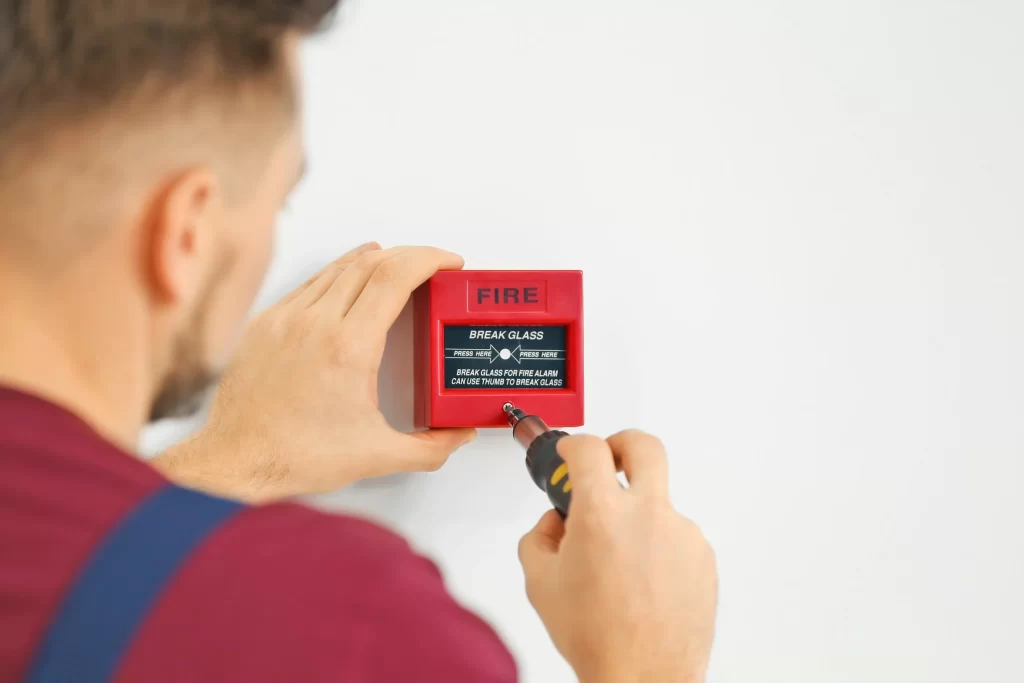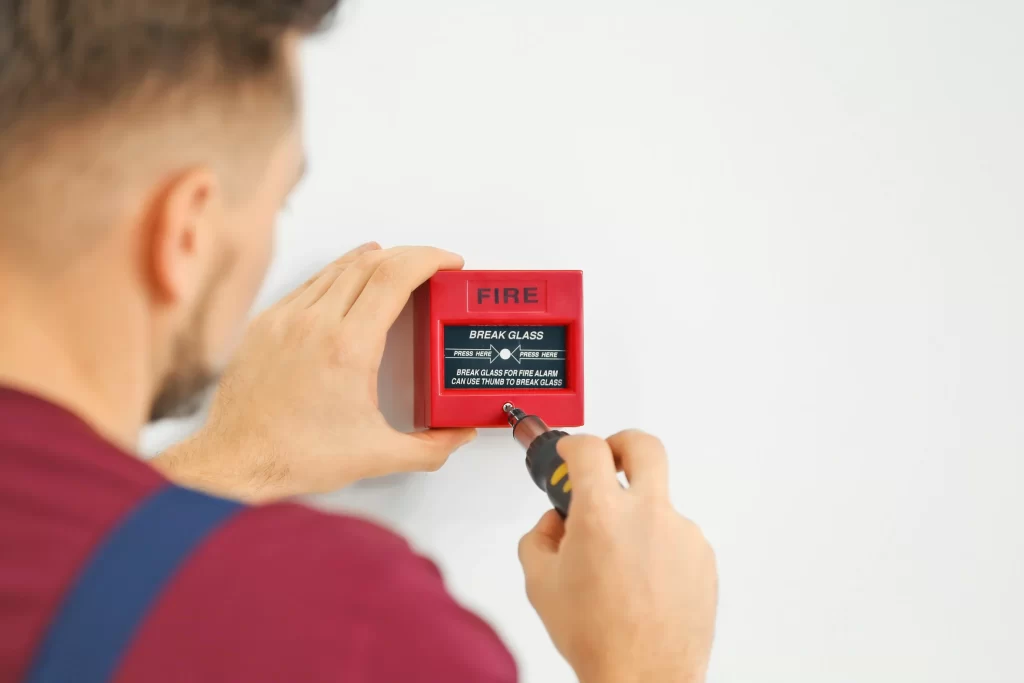
Do you ever wonder if your fire alarm system is up-to-date and effective?
Fire safety is essential, and installing a fire alarm in your home or business is crucial to keeping yourself and others safe.
However, not all fire alarms are created equal, and it can be challenging to know what kind of fire alarm you have and whether it provides adequate protection. It is also essential to keep your fire system updated.
In this blog, we will provide the information you need to identify what kind of fire alarm you have and help you determine whether you need to upgrade to a monitored fire alarm system.
Looking for reliable security solutions? Upgrade your security standards with Certified Alarms and Surveillance.
What is a Fire Alarm?
Before diving into the different fire alarm types, let’s start with the basics. A fire alarm is a device that detects the presence of fire and alerts people in the vicinity to the potential danger. Most fire alarms use either smoke detectors or heat sensors to detect the presence of a fire.
When a fire is detected, the fire alarm will sound an alarm to alert building occupants to evacuate.
Types of Fire Alarms
There are several types of fire alarms, each with advantages and disadvantages.
Some of the most common types of fire alarms include:
Ionization Smoke Alarms
This type of smoke alarm detects small smoke particles produced by fast-burning fires. They are often less expensive than other smoke alarms but can be prone to false alarms.
- Utilize ionization chambers to detect smoke particles
- Effective for detecting fast-flaming fires
- Often found in residential settings
Photoelectric Smoke Alarms
This type of smoke alarm detects larger smoke particles produced by slow-burning fires. They are less likely to produce false alarms than ionization smoke alarms but may be more expensive.
- Utilize light sensors to detect smoke particles
- Ideal for detecting slow, smoldering fires
- Commonly used in kitchens and bedrooms
Heat Detectors
Such a fire alarm detects temperature changes that are caused by a fire. They are often used in areas where smoke alarms, such as a kitchen, may produce too many false alarms.
- Triggered by a rapid rise in temperature
- Suitable for areas where smoke alarms may not be appropriate, such as kitchens and garages
- Often used in conjunction with smoke alarms for comprehensive fire detection.
Combination Smoke and Carbon Monoxide Alarms
This type of alarm combines the detection of smoke and carbon monoxide in a single device. They are often used in homes with gas appliances or attached garages.
- Combine features of smoke and heat alarms for enhanced fire detection
- Provide comprehensive coverage against various types of fires
- Ideal for larger properties or buildings with diverse fire risks
Identifying Your Fire Alarm System
- Check Documentation: Review any documentation provided by your alarm system installer or manufacturer. Look for information on the type and model of your fire alarm system.
- Visual Inspection: Examine the physical appearance of your fire alarm devices. Note any labels or markings that indicate the type of alarm (e.g., ionization, photoelectric).
- Consult a Professional: Contact a qualified fire safety expert or technician service like Certified Alarms. Schedule an inspection to assess your fire alarm system and provide guidance on its type and functionality.
Seeking top-notch security solutions? Look no further than Certified Alarms.
Upgrading to a Monitored Fire Alarm System
While all fire alarms provide some protection, a monitored system offers an added layer of security.
With a monitored fire system, your fire alarm is connected to a monitoring center that will be alerted in the event of a fire. The monitoring center will then alert emergency services, even if you are not home or unable to call for help.
If you live in an area prone to wildfires or other natural disasters or have valuable possessions or a business you want to protect, upgrading to a monitored fire alarm may be a good investment. Fire Monitoring Bragg Creek offers monitored systems that provide 24/7 monitoring and protection.
Ensure rapid response to fire emergencies with our Monitored Fire Alarm System – contact us now!
Key Takeaways
- Understanding the type of fire alarm system you have is crucial for ensuring proper fire detection and response.
- Regular maintenance and inspection of your fire alarm system are essential to keep it functioning optimally.
- Consider upgrading to a monitored fire alarm system for enhanced protection and peace of mind.
FAQs
To ensure it functions correctly, you should test your fire alarm system monthly. Additionally, schedule annual inspections by a qualified technician to verify the system’s integrity. You can also shift yourself to a monitored fire alarm system.
While some basic smoke alarms can be installed DIY, it is advisable to enlist the services of a professional for more complex systems. They can ensure proper installation and adherence to local fire safety regulations.
If your fire alarm system activates without a fire emergency, promptly silence the alarm and investigate the cause. It could be triggered by cooking smoke or steam. If unsure, contact your alarm provider for assistance.
Conclusion
Identifying the type of fire alarm you have is important for ensuring your safety and the safety of others in the event of a fire.
Upgrading to a Fire Monitoring Bragg Creek system provides an added layer of protection and peace of mind, especially for those living in areas prone to natural disasters or with valuable possessions or businesses. Protecting people, property and profits
Want security solutions that fit your budget? Enlist Certified Alarms.

